Tarantulas, like all arachnids and insects, must shed their skin, or molt, to grow. This is because they have an exoskeleton. Since this exoskeleton is hard, the only way these invertebrates can grow is by breaking through their old skin, revealing the pliable new skin underneath. Once the shed is complete, the new and larger skin is then allowed to dry. What I present for you here is a pictorial guide to one of the world’s largest species of tarantulas, the Brazilian Salmon Pink Bird-eating Spider (Lasiodora parahybana), named for the beautiful pink hairs on this massive spider’s abdomen.
After making a bed of silk, the spider turns onto its back to start the molting process.
As the spider starts to break through the old skin, through the carapace, the old skin starts to raise up.
Little by little the new skin starts to reveal itself.
Much more of the actual tarantula is now apparent, with the old, duller looking skin on top.
A closer look reveals that the shed fangs are actually white. They will darken once they harden.
Here the tarantula is now fully out of its old skin.
This whole process is very stressful for the tarantula and it needs a lot of rest afterwards.
After kicking the old skin off of itself, the tarantula takes some time to get its strength back.
It slowly moves its legs, helping in the drying process.
A closer look reveals the still-white fangs.
Once it feels strong enough, the tarantula then turns over where it now rests and the new skin hardens.
Once the molt is complete the tarantula spends a few days to dry properly and to get all of its strength back. During this time it is risky for them to eat since their fangs haven’t dried entirely so the rely on fresh water to help in the recovery process.
~David Albaugh



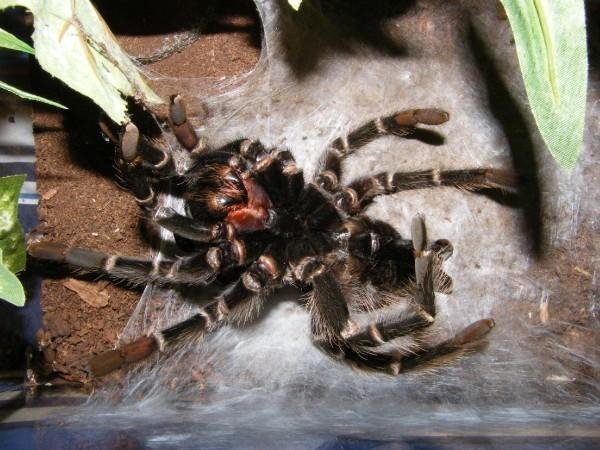



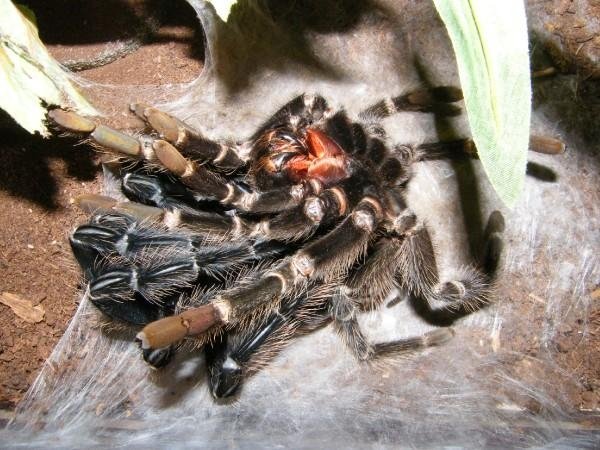
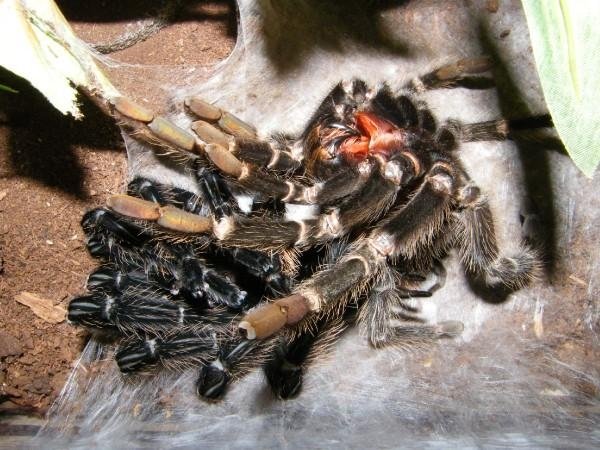
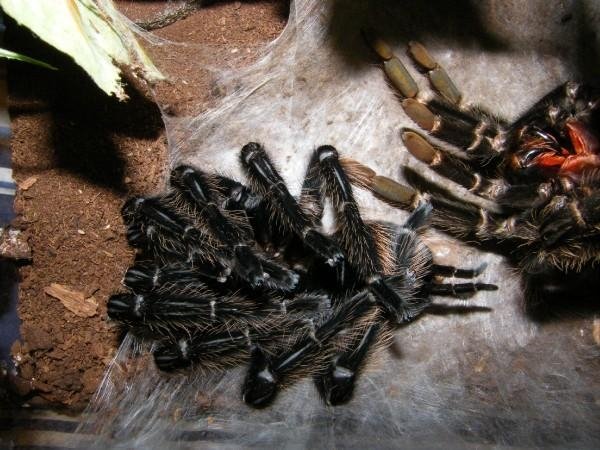

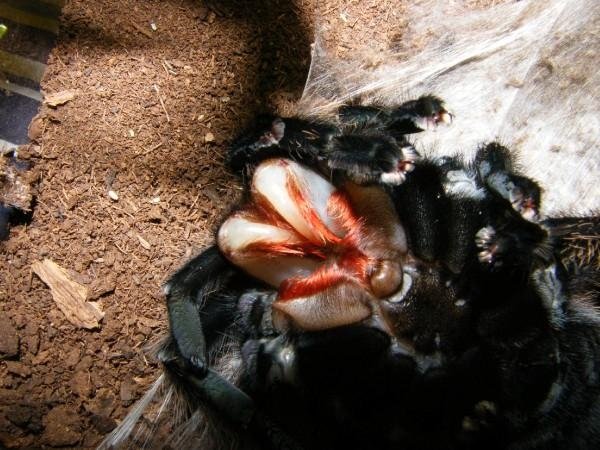
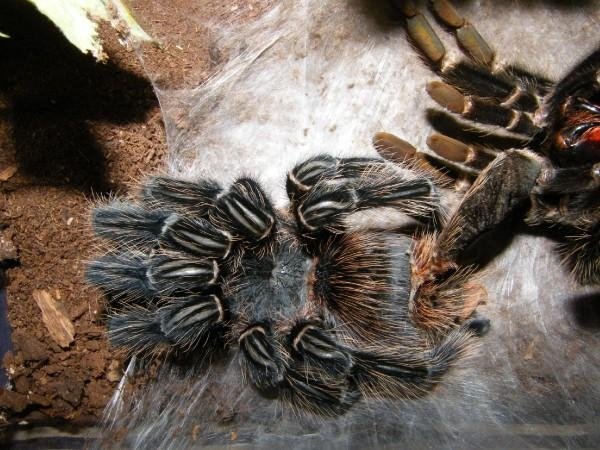



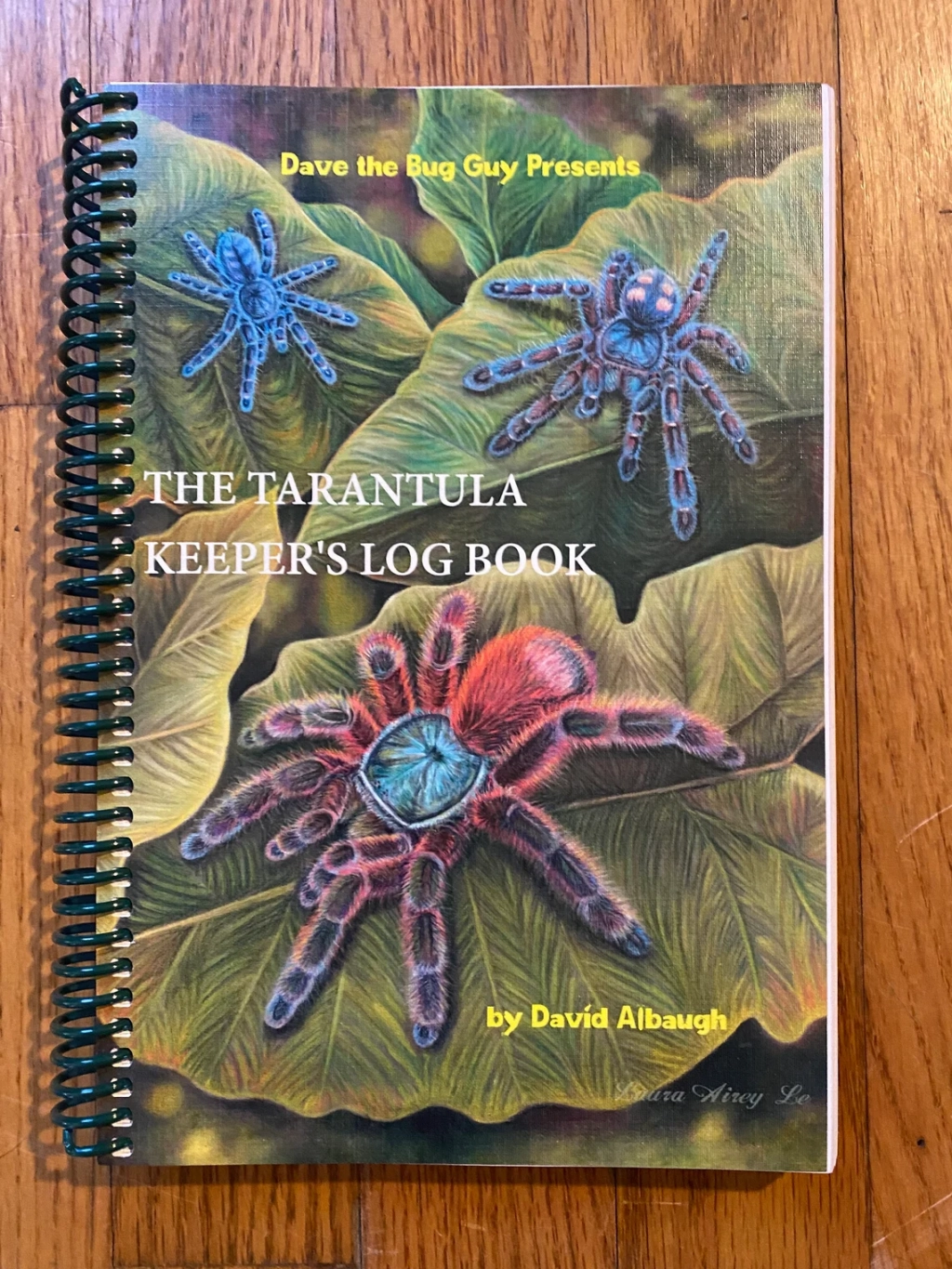
Leave a comment